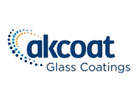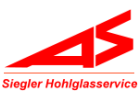Glass experts with in-depth knowledge of the automotive industry know how varied and innovative the use of automotive glass can be.
It’s always a matter of vehicle glass elements being turned into functional glass through complex coating processes.
The result of this finishing process might be anti-reflective glass, solar protection and heat insulation glass, electrically conductive glass, or even self-cleaning windows.
Automotive manufacturers who order these types of glass panes for installation in their vehicles operate on the just-in-sequence principle, and glass finishers must ship and deliver a specific batch quickly and punctually enough to accommodate this.
Taking this one step further, a glass pane manufacturer who hands the raw product over to the relevant finisher – whether in-house or at another company – is also part of this value chain, along with procurement, distribution, and sales logistics.
“Because the time factor plays such a major role in the automotive industry, comprehensive digitalised processes also play a huge part in the manufacturing of finished glass panes and unfinished glass.
"The virtual workflows that interact with real production are a tremendous advantage in terms of speed,” explains Heinz-Josef Lennartz, who’s in charge of consulting in the areas of digitalisation, project development, and customer development for Vertical Glass and Solar at Siemens.
Virtual product-development process
A car window can be simulated on a computer during the product development process, and then appropriate forms of production can be derived with just a few clicks.
This is how the means of production and production steps are automatically developed at the same time.
These models are known as digital twins. But when we use the oft-cited term ‘digital twin’ at this stage, we need to be aware that it still has no real counterpart – production hasn’t yet started ‘for real’.
Instead, it’s initially a matter of virtually developing, testing, and even scheduling.
When at some point the automotive manufacturer finally places the order, the relevant supplier already has an advantage, thanks to virtual product development and data storage.
The data fed into the process can then be used to virtually commission the production line ahead of time.
This kind of simulation proves to be a tremendous advantage, because the actual commissioning of production goes much faster.
This is also true when the glass finisher optimises their own process in the same way.
Comprehensive view instead of data silos
At first glance, this might seem like data silos.
“But in fact this is exactly where we start networking. Our pledge is to enable data-based processes for all the stakeholders in the supply chain.
“But the actual added value comes from a comprehensive view of the value chain. The ideal situation is when you have a uniform database and the necessary information is forwarded to the correct interfaces,” says Lennartz.
The fact that this isn’t a one-way street becomes clear as soon as the production plant is up and running.
Potential product changes can first be simulated virtually and then implemented in reality. Real knowledge of energy consumption, for example, is then fed back into the virtual twin.
These closed loops based on a consistent database would be the goal. If we then add another networking dimension, we come very close to the digital enterprise – the vertical exchange of data from the field to the cloud.
For example, quality data from production can be stored in an IIoT (Industrial Internet of Things) system like MindSphere and retrieved by the person processing the glass.
This not only saves time but also makes it easier to achieve all the relevant KPIs (key performance indicators), whether they’re quality parameters, productivity and efficiency targets, or the use of resources.
“If you know what you want to achieve, your automation and digitalisation – and therefore your optimisation – can be targeted unbelievably precisely,” says Lennartz.
He has consistently received confirmation from his customers in the glass industry that they’re all crazy about these mechanisms for success – and not just for automotive glass production and finishing.
























